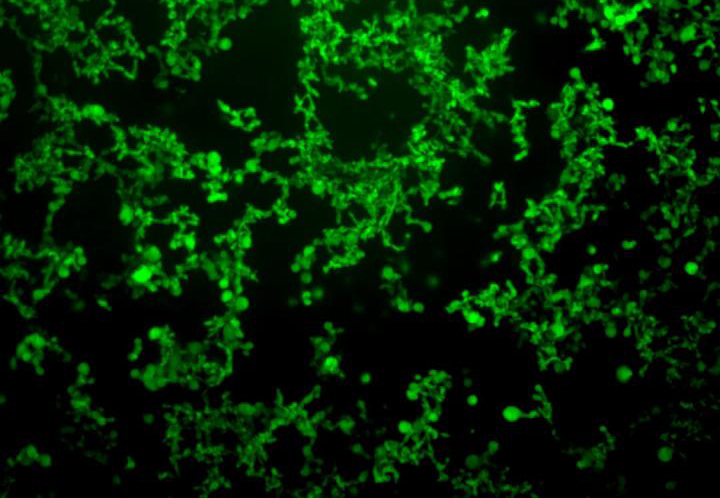Synthetic biomaterials based on peptides and proteins have lacked the versatility of their natural counterparts. The problem: Unlike the natural biomaterials, the synthetic biomaterials miss out, by and large, on the power of post-translational modification (PTM). A new kind of synthetic biomaterial, however, exploits PTM to accomplish temperature-triggered, hierarchical self-assembly. If biomaterials with these capabilities prove to be injectable, and not just implantable, they may realize novel applications in tissue engineering, regenerative medicine, and drug delivery.
Post-translational-savvy biomaterials are being developed by scientists based at Duke University. For example, in a recent study, these scientists demonstrated the feasibility of creating a genetically encoded biohybrid material through PTM. In a paper (“Genetically Encoded Lipid–Polypeptide Hybrid Biomaterials That Exhibit Temperature-Triggered Hierarchical Self-Assembly”) that appeared March 19 in the journal Nature Chemistry, the scientists reported on the generation of a family of three stimulus-responsive hybrid materials—fatty-acid-modified elastin-like polypeptides—using a one-pot recombinant expression and post-translational lipidation methodology.
To make a hybrid material with useful biomedical properties, researchers in the laboratory of Ashutosh Chilkoti, Ph.D., focused on creating a series of lipid-modified polypeptides, also called fatty-acid-modified elastin-like polypeptides, or FAMEs.
“Nature combines different chemical alphabets to make very sophisticated materials,” explained Dr. Chilkoti, who is the chair of the biomedical engineering department at Duke and the senior author of the Nature Chemistry paper. “One way it does this is by combining the amino acid vocabulary of proteins with other very different alphabets—sugars and fats are just two examples of the many hundreds of such PTMs. As materials scientists, we have not taken advantage of nature's methods to make hybrid materials, and this provided the inspiration for this research.”
When a lipid is fused to a peptide sequence, the different physical properties of the lipid and peptide result in the formation peptide amphiphiles, or PAs. Typical PAs can self-assemble into diverse structures like long fibers, making them useful as scaffolds for tissue engineering. However, this happens spontaneously, and these materials cannot be injected into the body but instead have to be implanted.
The research team added another useful biomaterial, elastin-like polypeptide (ELP), because it can change from a soluble state to an insoluble state, or vice versa, depending on temperature.
Using three components—a lipid myristoyl group, a β-sheet-forming peptide sequence, and an elastin-like polypeptide (ELP)—the researchers created a hybrid biomaterial, the FAME polypeptide, that changes from molecules floating in solution into a solid material, simply by raising the temperature.
“These hybrid biomaterials contain an amphiphilic domain, composed of a β-sheet-forming peptide that is post-translationally functionalized with a C14 alkyl chain, fused to a thermally responsive elastin-like polypeptide,” the authors of the paper indicated. “They exhibit temperature-triggered hierarchical self-assembly across multiple length scales with varied structure and material properties that can be controlled at the sequence level.”
“Attachment of lipids to short sequence of peptides, typically 5–20 amino acids, have been investigated for many years, but combining large biopolymers with lipids had not been explored,” said Davoud Mozhdehi, Ph.D., a postdoctoral fellow in the Chilkoti lab and the study’s lead author. “What distinguishes FAMEs from PAs is the presence of this temperature-sensitive biopolymer with much longer length, typically 200–600 amino acids, in the form of the ELP.”
“That short β-sheet-forming peptide sequence only makes up about 2% of the entire sequence,” Mozhdehi noted. “But it has a huge impact on the self-assembly behavior. This hybrid material retains thermal responsiveness of the ELP and the hierarchical self-assembly of the PA, creating a unique material with programmable behavior.”
“By combining a PA with an ELP, we get a molecule that can go from liquid to solid within seconds with a small rise in temperature,” Chilkoti elaborated. “This opens up new applications in medicine, where these materials can be injected as a liquid that would then turn into solid inside the body.”
“These building blocks are known in the field, and now we have shown that combining them by forming covalent bonds results in synergistic properties and self-assembly,” Mozhdehi added. “We hope to expand this method to other lipids and proteins and develop new tools and materials for the biomedical applications.”


